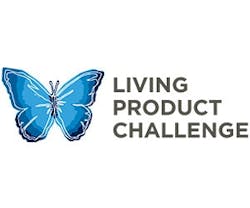Living Product Challenge: Certifying a Sustainable Future
Imagine a world where every product created on Earth is made using renewable resources and non-toxic materials and is manufactured in a way that didn’t just use energy, but created more energy for a net-positive result.
That’s what James Connelly, Director of the Living Product Challenge, envisions for a new product certification.
“What our program is really attempting to do is dramatically raise the bar of what a sustainable product should be. We think of ourselves as a guiding light for a new and redefined definition of true sustainability, or what we call regenerative manufacturing,” Connelly explains.
Offered by the International Living Future Institute, the Living Product Challenge is described as a philosophy that believes it’s possible to create products that have a net-positive impact instead of a negative effect on the environment. The standard is used as a tool to get manufacturers and building owners to think outside the box in an effort to not only reduce their carbon footprint, but to increase their carbon handprint, which Connelly defines as the measurement of positive impacts a company makes compared to business as usual in addition to reducing their environmental footprint.
Rigorous Requirements
The manufacturer must develop and publicly share a three-year plan to reduce the product’s energy or water consumption or improving material health. A certified product must create an energy handprint greater than the footprint through one or more of the following strategies:
- Innovate to conserve energy or generate renewable energy across the lifecycle of the product
- Innovate within supply chains to conserve energy or generate renewable energy in the supply chain
- Engage with users to achieve energy conservation through improved use of the product
“In our program, if you are going to be fully certified, all the water and energy you use to make your product has to come out to be net-positive,” asserts Connelly.
“A company we work with makes insulation products. They don’t get credit for producing insulation that meets code. But if they can increase their insulation performance in buildings, then they can create an energy handprint.”
From Buildings to Products
The organization’s hope is to inspire the same kind of change in the interior and consumer goods industry that it did with the buildings sector in the Living Building Challenge. The standard, created in 2006, also set a lofty bar that has since made incredible gains in sustainability across the market.
The Living Product Challenge is already off to a fast start. Since its release in May 2015, there have been 25 pilot products in the program that range from the world’s largest manufacturers in their product categories for building materials all the way down to small entrepreneurial startups.
“We were surprised by the rapid uptick in the program because it is so rigorous and there are many certifications in the marketplace,” says Connelly. “I think many in the manufacturing community have found something where they can really be pushed and can find sustainability in their own companies and reach out to communities as well.”
An entrepreneurial start-up, Bureo Skateboards, achieved Living Product certification by recycling fishing nets that pollute local coastlines. They’ve recycled more than 30,000 square feet of plastic, repurposing it for their own products. Bureo has also invested in their community by providing solar energy panels at a nearby school for disadvantaged youth.
“It’s really important we have these real-life tangible examples,” says Connelly. “For me what would deem this certification successful is when we change the mindset in the industry where people embrace the idea and people work toward the goal that production and manufacturing can be a solution rather than a problem.”
Keith Evanson [email protected] is e-content editor for BUILDINGS.
